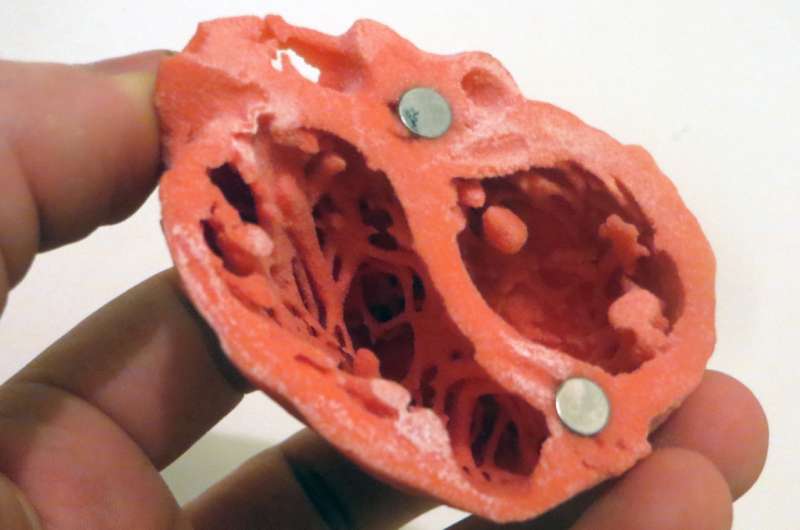New insights into the biochemical signaling of cardiac muscle cells

Contraction and relaxation of the heart are controlled by the periodic rise and fall of calcium in the heart's muscle cells, known to be regulated by a protein called phospholamban (PLN). The release of hormones, such as (nor-)adrenaline in stressful situations, leads to an enzymatic modification of PLN called phosphorylation. These biochemical reactions enable the heart muscle to contract stronger and relax faster ("fight-or-fight" response).
The functional significance of this protein becomes apparent in patients who carry mutations in the PLN gene – most of which lead to severe forms of heart disease with frequent cardiac arrhythmias and ultimately heart failure. It is known that PLN forms larger molecular structures, called pentamers, but despite decades of research on PLN, the biological role of its pentamers remains unclear.
Using mathematical modeling in combination with biochemical and cell-biological experiments, Daniel Koch, research student in the Randall Centre for Cell & Molecular Biophysics, School of Basic & Medical Biosciences, has recently discovered that pentamers have a dual role in the performance of the human heart.
Firstly, PLN pentamers have been found to act as a signal persistence sensor by competing with monomeric PLN molecules, which are not in a pentamer, and delaying their modification. This is to ensure that heart muscle cells only respond to sufficiently persistent adrenaline stimulation. Secondly, pentamers have been found to provide a biochemical short-term memory for (nor-)adrenaline signals that enables heart muscle cells to remember the stimulation strength to which they have been exposed to in the preceding seconds.
Using simulations, Koch and colleagues showed that this memory and the persistence sensing complement each other to act as filters that – similar to signal processing in electronic communication – can remove the 'noise' from the molecular stress signal and thereby ensure coordinated calcium removal and relaxation of the heart.
Koch says that their study "offers a new perspective on the role biochemical signaling networks play in regulating the coordinated and rhythmic contraction of the heart. Our findings suggest that molecular noise-filters in such networks could be important to prevent the occurrence of cardiac arrhythmias and hopefully will help to better understand and treat such diseases."
Koch and colleagues now aim to combine this new model with mathematical descriptions of the electrophysiology of the heart. This will enable the team to directly study the influence of 'noise-filtering' on the emergence of arrhythmias and make new predictions to allow the group to validate and improve the model with new experimental data from the 'wet'-lab.
"In particular," says Koch, "we want to study how PLN mutations such as R14del cause arrhythmias and contractile dysfunction but also how to design efficient therapies for patients with such mutations."
More information: Daniel Koch et al, Molecular noise filtering in the β-adrenergic signaling network by phospholamban pentamers, Cell Reports (2021). DOI: 10.1016/j.celrep.2021.109448



















